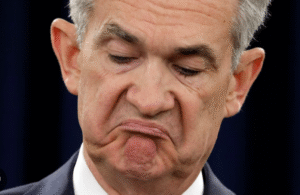$FTSE $GBPUSD $UKX
#BankOfEngland #InterestRates #BOE #UKEconomy #MonetaryPolicy #Inflation #RateCut #GBP #FTSE100 #Recession #CentralBank #StockMarket
The Bank of England made its first interest rate cut of 2025 on Thursday, lowering the key policy rate from 5.0% to 4.5% in response to concerns over slowing economic growth. The decision comes after months of stagnant economic activity in the UK, with rising uncertainty over inflation stabilization and domestic demand. BOE policymakers had signaled a potential shift towards easing in previous months as inflation cooled from its peak in 2022 and 2023. The rate cut indicates the central bank’s focus on stimulating economic activity while maintaining vigilance over inflation trends.
Markets responded with mixed reactions as the FTSE 100 saw moderate gains, while the British pound weakened against major currencies, including the US dollar and euro. Investors are weighing the prospects of lower interest rates, which typically benefit equities by reducing borrowing costs. However, concerns remain regarding whether this move signals deeper structural issues within the UK economy, which has struggled with weak industrial output, soft consumer demand, and ongoing Brexit-related uncertainties. The BOE’s move follows similar monetary policy actions taken by other major central banks, including the European Central Bank and the US Federal Reserve, which are also expected to pivot towards easing measures in 2025.
Lower borrowing costs could provide relief to businesses and consumers facing high financing expenses over the past two years of aggressive rate hikes. The housing market, which saw a slowdown in mortgage lending due to higher rates, is expected to experience some renewed activity as lower borrowing costs improve affordability. However, the BOE will need to navigate the fine line between supporting growth and ensuring inflation remains within its 2% target. Core inflation, which strips out volatile food and energy prices, remains a crucial factor in determining future monetary policy decisions. The BOE has indicated that it will assess further economic data before committing to additional rate reductions.
Looking ahead, financial markets will be keenly watching further BOE statements and data releases that could signal additional easing steps. Analysts will scrutinize inflation reports, GDP growth figures, and labor market trends to gauge the central bank’s future stance. The UK government may also feel increased pressure to introduce fiscal measures to complement monetary easing efforts. With the global economic outlook still uncertain, the BOE’s actions could have broader implications on international currency markets, capital flows, and investor sentiment. Whether this rate cut will be sufficient to reinvigorate the UK economy remains to be seen, but it marks a pivotal moment in the country’s post-pandemic monetary trajectory.











Comments are closed.